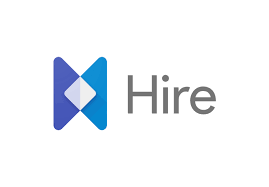The Applicant Tracking System (ATS) market has long been the cornerstone of recruitment technology. For companies with over 100 employees, having an ATS is almost a given. The market for the past 10 years has been uneventful. Companies buy an ATS, replace their ATS, and complain about their ATS.
This year, however, the landscape of ATS providers is rapidly evolving, driven by growing dissatisfaction among users and significant gaps in traditional systems. As new providers enter the market with innovative solutions, it’s an exciting time to be looking at the bread and butter of recruitment technology.
The State of the ATS Market
The ATS market is facing three undeniable truths:
- Widespread Dissatisfaction: Many companies are unhappy with their current ATS. Issues range from user-unfriendly interfaces to limited functionalities that fail to meet modern recruitment needs. We found that less than half of companies are happy with their ATS.
- High Replacement Rates: Aptitude Research found that 1 in 4 companies are looking to replace their ATS within the year. This statistic underscores a significant shift in how businesses are approaching their recruitment technology.
- Gaps in Functionality: Traditional ATS platforms often lack critical capabilities in candidate relationship management (CRM), frontline worker support, and effective candidate communication. These gaps are increasingly difficult to overlook in today’s competitive job market.
Historical Options: Best of Breed vs. HCM Suites
Historically, companies choosing an ATS had two main options:
- Best of Breed: These are specialized ATS providers focusing solely on recruitment technology. While they traditionally offered advanced features and superior user experiences, many have struggled to keep pace with evolving demands. Some have been acquired by private equity firms (iCIMS and Jobvite and Lever), which has often led to a shift in focus away from end-users.
- HCM Suites: Large enterprise software providers like Workday, UKG, Oracle and SAP fall into this category. These providers have been winning deals over many of the best of breed providers for integration, advancements in AI, and the ability to integrate ATS capabilities into broader HR functions.
Current Landscape and Emerging Trends
The dissatisfaction with current ATS options and the gaps in traditional systems have paved the way for new providers and innovative solutions to emerge. Key trends include:
- Recruiter Experience: Greenhouse stands out in the best of breed category by maintaining a strong focus on both the candidate and recruiter experience. And, one of the few best of breed ATS providers still committed to DEI initiatives with recent announcements that include resume anonymization and enhancements to its scorecard funcationality. While it primarily serves the lower enterprise and mid-market segments, its commitment to the recruiter sets it apart.
- Integrated CRM and Communication Tools: Modern ATS providers are increasingly incorporating CRM capabilities and enhanced communication tools to improve engagement with candidates throughout the hiring process. This shift addresses one of the major gaps in traditional systems. But for many of these providers, CRM is just a check the box and lacks meaningful functionality.
- Support for Frontline Workers: There is a growing recognition of the need to support frontline workers, who often have different recruitment needs compared to office-based roles. New ATS solutions are emerging that cater specifically to these requirements, offering more tailored functionalities. We found that 1 in 2 companies with frontline workers are reevaluating their ATS and now they have better options (hello Paradox!).
New Entrants and Latest Announcements
Several players have recently entered the ATS market, bringing fresh perspectives and innovative solutions. The categories are not clearly best of breed vs. HCM suite anymore. Companies have options that not only fill the gaps with traditional systems but offer advanced capabilities that range from skills to communication to AI.
These new announcements change the buying behavior around recruitment technology. It makes the ATS not the core component and shifts the value to areas of TA tech that can drive real transformation.
These include:
- Paradox: Paradox launched an ATS for frontline workers and has been supporting companies like McDonald’s with end-to-end recruitment.
- Gem: Gem added ATS to its suite of solutions that includes CRM and sourcing and analytics.
- Eightfold: Eightfold announced the first AI-native and talent intelligence ATS system two weeks ago at its Cultivate event to expand its TA solutions.
- Payroll Providers: Every SMB or mid-market payroll provider seems to be expanding its suite into broad HCM that includes ATS. These providers offer a simple option and integrated capabilities.
These are just a few of the ATS announcements this year and we expect to see more. This disruption is addressing longstanding issues and introducing advanced capabilities that cater to the modern recruitment landscape.
The ATS market is undergoing a significant transformation. With a clear trend towards improving user experience, integrating advanced communication tools, leveraging AI, and supporting diverse worker types, the future of ATS looks promising. As new providers continue to innovate, we can expect a more dynamic and effective recruitment technology landscape, better suited to the demands of today’s employers and job seekers.







